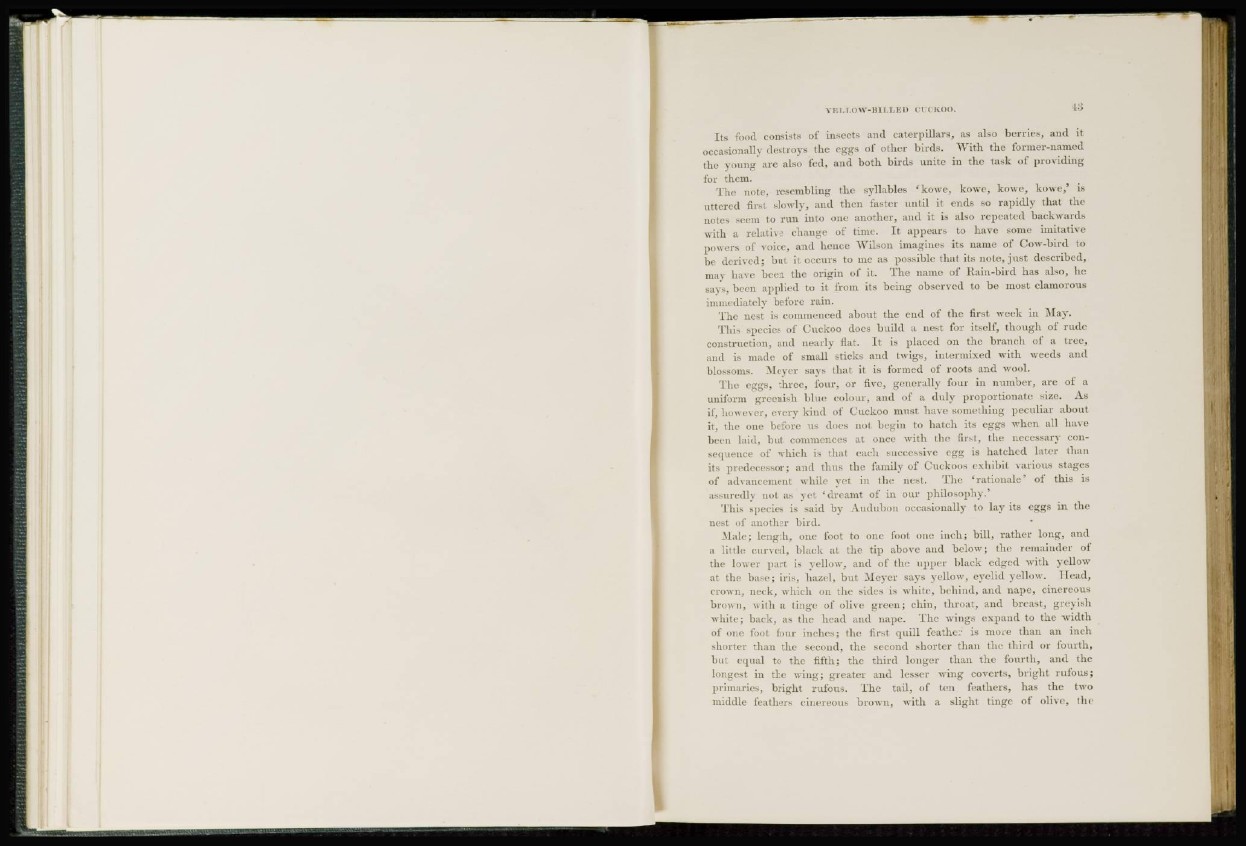
Y E L L O W - B I L L E D (TCKOO. *8
Its food consists of insects and caterpillars, as also berries, and it
occasionally destroys the eggs of other birds. With the former-named
the young are also fed, and both birds unite in the task of providing
for them.
The note, resembling the syllables 'kowe, kowc, kowe, kowe,* is
uttered first slowly, and then faster until it ends so rapidly that the
notes seem to run into one another, and it is also repeated backwards
with a relative change of time. It appears to have some imitative
powers of voice, and hence Wilson imagines its name of Cow-bird to
be derived; but it occurs to me as possible that its note, just described,
may have been the origin of it. The name of Ram-bird has also, he
Bays, been applied to it from its being observed to be most clamorous
immediately before rain.
The nest is commenced about the end of the first week in May.
This species of Cuckoo does build a nest for itself, though of rude
construction, and nearly fiat. It is placed on the branch of a tree,
and is made of small sticks and twigs, intermixed with weeds and
blossoms. Meyer says that it is formed of roots and wool.
The eggs, three, four, or five, generally four in number, are of a
uniform greenish blue colour, and of a duly proportionate size. As
if, however, every kind of Cuckoo must have something peculiar about
it, the one before us does not begin to hatch its eggs when all have
been laid, bul commences at once with the first, the necessary consequence
of which is that each successive egg is hatched later than
its predecessor; and thus the family of Cuckoos exhibit various stages
of ad\ancement while yet in the nest. The 'rationale' of this is
assuredly not as yet 'dreamt of in our philosophy.*
This >peeies is said by Audubon occasionally to lay its eggs in the
nest of another bird.
Male; length, one foot to one foot one inch; bill, rather long, and
a little curved, black at the tip above and below; the remainder of
the lower part is yellow, and of the upper black edged witli yellow
at the base; iris, hazel, but Meyer says yellow, eyelid yellow. Head,
crown, neck, which on the sides is white, behind, and nape, cinereous
brown, with a tinge of (dive green; chin, throat, and breast, greyish
white; back, as the head and nape. The wings expand to the width
of one foot four inches; the first quill feat h e is more than an inch
shorter than the second, the second shorter than the third or fourth,
hut equal to the fifth; the third longer than the fourth, and the
longest in the wing; greater and lesser wing coverts, bright rufous;
primaries, bright rufous. The tad, of ten feathers, has the two
middle feathers cinereous brown, with a slight tinge of olive, the